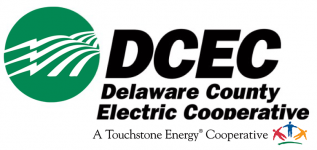The Cooperative uses targeted, low-volume herbicide applications as a cost-effective way to control re-growth of undesirable species within the ROW. All herbicide applications are performed under the supervision of one of the Cooperative’s Certified Pesticide Applicators. Certified Pesticide Applicators are designated by the NYS Department of Environmental Conservation and are subject to initial training, testing, and continuing education requirements.
Herbicides allow the Cooperative to utilize an 8-year ROW cycle instead of a 4-year cycle, which reduces the Cooperative’s vegetation management cost by more than $500,000 per year.
There are 5 different herbicides and 2 other types of additives used by the Cooperative. Their labels are provided below for your convenience:
| Herbicides | ||
| Garlon 4 Ultra | Label | Q & A |
| Arsenal | Label | |
| Rodeo | Label | Q & A |
| Stalker | Label | |
| Escort | Label | |
| Basal Oil | Label | |
| Aquachem | Label |
The Cooperative utilizes 2 main types of herbicide application: cut stump treatment and low volume targeted foliar treatment.
Cut Stump Treatment – Cut stumps are treated by Cooperative employees from handheld plastic spray bottles containing a mixture of Garlon 4 Ultra, Basal Oil, and Stalker. The herbicide is applied directly to the outside ring (cambium layer) of cut stumps to prevent regrowth of that tree. Basal oil is an oil used to dilute the herbicide and helps to hold the herbicide in place on the stump.
Low Volume Targeted Foliar Treatment – This type of herbicide treatment generally occurs in Year 2 of the Cooperative’s ROW cycle, approximately 1 year after the ROW was trimmed. The most common herbicide mixture used by the Cooperative for this purpose contains Garlon 4 Ultra, Arsenal, Water, and Aquachem. Aquachem is an additive that helps the herbicide stay in solution with water and helps the herbicide adhere to the surface of leaves, which can have a waxy covering. Typically, a Cooperative employee caries the herbicide solution in a backpack as they walk through the ROW. The Cooperative employee identifies undesirable species through leaf, bark, and growth characteristics of species growing within the ROW. The Cooperative employee applies herbicide to the leaves of the undesirable plant in a targeted fashion.
Special Cases of Targeted Foliar Treatment – Two special cases of low volume targeted foliar treatment are:
- Application within 100 feet of a waterway. Within 100 feet of a waterway, the Cooperative uses a different herbicide mixture that includes Rodeo, Water, and Aquachem.
- Application in area with prevalence of ash trees. To help control ash tree regrowth, Escort is added to the mixture normally used for low volume targeted foliar application.
Herbicide Treatment Free Option – If individual members wish not to have herbicide treatments on their property, they can notify the Cooperative in writing or by e-mail and their property will be added to a list of herbicide-free properties. Members should submit their requests to office@dce.coop or Delaware County Electric Co-op, P.O. Box 471, Delhi, NY 13753. For more information about the herbicide-free list or to confirm whether your property is on the list, please call 607-746-2341. Herbicide free properties are subject to more frequent cutting and/or mowing by the Co-op. The Cooperative does not use any herbicides of any kind on properties on the herbicide-free list.
Vegetation Management
Vegetation Management Practices
Herbicides Used in Vegetation Management
Vegetation Management Equipment
Vegetation Management Member Notifications
Vegetation Management Investment of Time and Dollars
Member Roles in Vegetation Management
Coming Soon...Vegetation Management Maps & History
